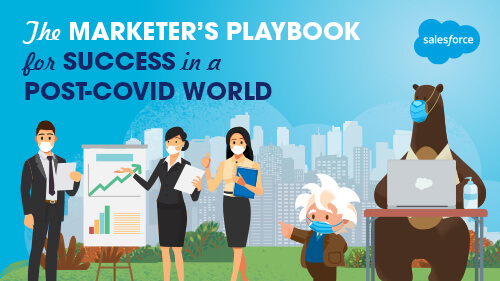The New Year has brought new hope as the world is finally emerging out of the pandemic. But certain profound shifts seen in consumer behaviour last year will continue to remain. A McKinsey Research report states that consumers will continue to prefer digital channels for everyday activities – from grocery shopping and eating, to accessing finance and education. Consumers who get used to this contactless world are unlikely to return to a high-touch world till safety concerns are completely removed. What does this mean for marketers?
As the Chief Marketing Officer (CMO), you must ensure that your customers’ journey is seamless and that the customer experience you offer is consistent across channels. In effect, you need to be where your customer is, and technology can enable you to do that.
Be strategic in leveraging data
“Invest in your data – it is the new oil. It drives your marketing decisions, especially when you invest in so many different channels,” says Yashdeep Vaishnav, Director, Salesforce Marketing Cloud.
Unfortunately, putting marketing data to work remains challenging. One of the primary reasons is the disparate data sources within an enterprise. According to the sixth edition of the Salesforce State of Marketing report, the average enterprise has 900 different applications, only about 28% of which are integrated.
This brings to question whether you, as a marketer, are using data to its full potential. A solution like Salesforce Marketing Cloud can help you connect data across multiple sources and devices to gain a unified view of your customer.
It can help you get answers to questions such as:
- How do you quantify the data?
- How do you figure which channel is giving you the best ROI?
- How do you extend email engagement to social channels such as Facebook?
- How can you personalise at scale?
In 2020, brands that fared well used data to gain customer insights and convert it into meaningful, empathy-led engagement. Take Bentley Motors and Frito-Lay. Whether it was providing technical guidance to customers or building a loyal, snack-obsessed clientele, both these globally renowned brands harnessed the power of data to derive customer insights and build highly personalised engagement.
Download our e-book
‘The Marketer’s Playbook for Success in a Post-Covid World.’
Be omnipresent to build and retain customers
Your customer no longer follows a linear path to connect with your brand. In all likelihood, they begin the search online, browse your social handles, and land on your website. Which means traditional marketing no longer holds good.
Take Puma, which rearchitected its marketing approach. The sportswear brand engages with customers wherever they are (including social channels). Seamless integration of multiple touchpoints allows the brand to guide customers logically to its online portal to end their journey – making a purchase.
Being strategic about omnichannel engagement isn’t for B2C brands alone. According to a Forrester report, more than one-third of B2B technology buyers say digital engagement channels (such as vendor websites) have become more important in their buying journeys.
Marketers have always been at the forefront of innovation and last year was no different. From using AI and bots to virtual and augmented reality, marketers who innovated with agility and responded to customer needs prevailed.
“In its 2021 Global Marketing Trends, Deloitte states that 58% of respondents in a consumer survey said they could recall at least one brand that quickly pivoted to better respond to their needs, and 82% said this led to them doing more business with the brand. ”
CMOs will continue to pivot their strategies around technology, but the ones with vision will humanise the brand-to-customer engagement. They will create synergies that will build great collaborations and customer confluences.
To know more about how to build such strategies and navigate your marketing mandate agilely through this new normal, download our e-book ‘The Marketer’s Playbook for Success in a Post-Covid World.’



